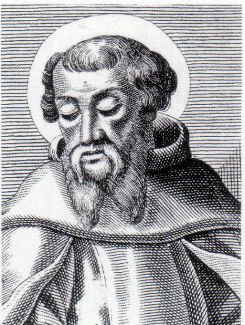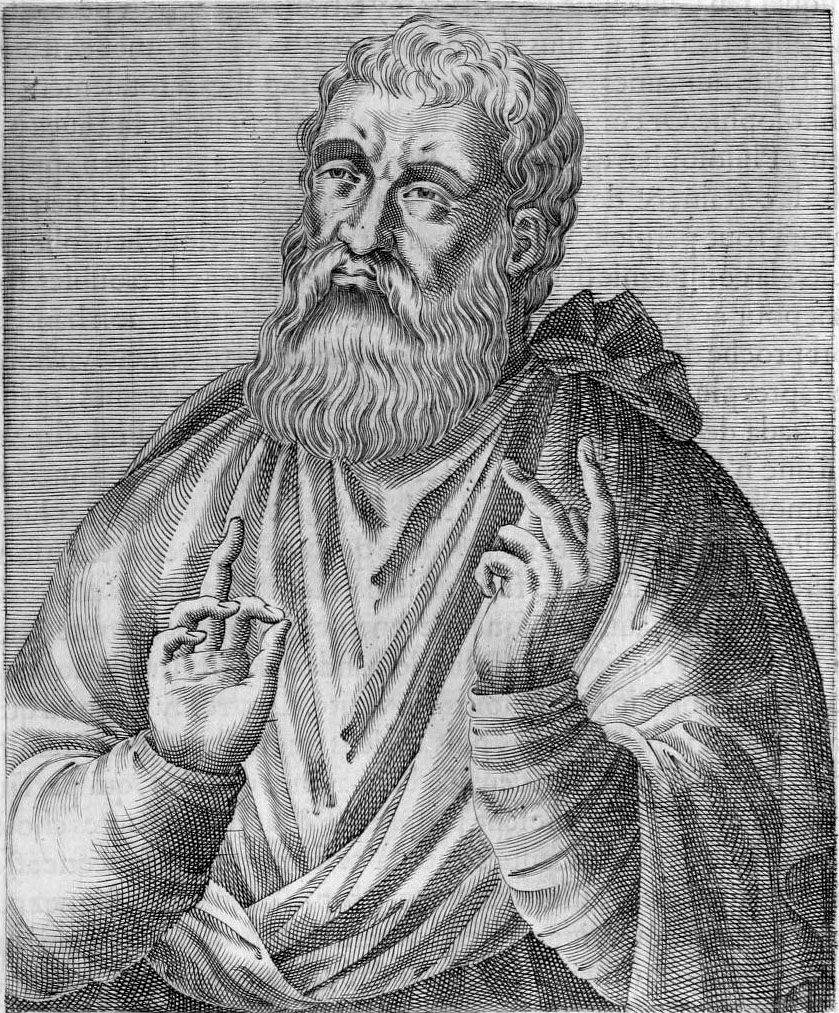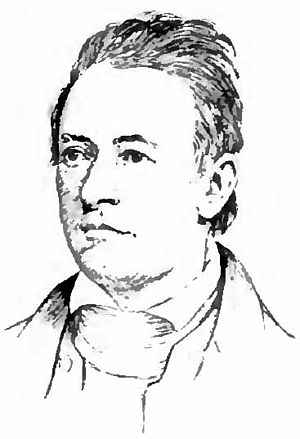Old Testament law discouraged practice of usury against fellow brethren. But, the Israelites were permitted to lend on interest to foreigners. Jesus mentions in His Parable of Talents that the servant with one talent should have deposited the money with bankers rather than hide it in the ground so that the Master could get back his amount along with interest. However, Aquinas considered the application of this suggestion in spiritual terms. For many centuries, usury was forbidden by the church (though Luther observes that many of the clergy did wickedly practice it). The Jews who practiced (or were marginalized to this trade) often became victims of persecution. A great example of the evil of usury is exemplified in Shakespeare's play, "Merchant of Venice", the usurer personified as the evil Shylock the Jew.
Aristotle considered usury as unnatural. In his Politics he wrote:
Now money-making, as we say, being twofold, it may be applied to two purposes, the service of the house or retail trade; of which the first is necessary and commendable, the other justly censurable; for it has not its origin in nature, but by it men gain from each other; for usury is most reasonably detested, as it is increasing our fortune by money itself, and not employing it for the purpose it was originally intended, namely exchange.Thomas Aquinas, borrowing the argument from Aristotle, further argued:
And this is the explanation of the name (TOKOS), which means the breeding of money. For as offspring resemble their parents, so usury is money bred of money. Whence of all forms of money-making it is most against nature. (A Treatise on Government, Gutenberg)
To take usury for money lent is unjust in itself, because this is to sell what does not exist, and this evidently leads to inequality which is contrary to justice. In order to make this evident, we must observe that there are certain things the use of which consists in their consumption: thus we consume wine when we use it for drink and we consume wheat when we use it for food. Wherefore in such like things the use of the thing must not be reckoned apart from the thing itself, and whoever is granted the use of the thing, is granted the thing itself and for this reason, to lend things of this kin is to transfer the ownership. Accordingly if a man wanted to sell wine separately from the use of the wine, he would be selling the same thing twice, or he would be selling what does not exist, wherefore he would evidently commit a sin of injustice. On like manner he commits an injustice who lends wine or wheat, and asks for double payment, viz. one, the return of the thing in equal measure, the other, the price of the use, which is called usury.Martin Luther also considered usury to be an evil; however, he rejected Aristotelianism altogether. His argument against usury was that it contravened the principle of Love. Luther considered that the Christian dealing and the right use of temporal goods consist in "giving them away, lending them without charge, and quietly letting them go when they are taken by force." (On Trading and Usury). He counters arguments in favor of usury in the following ways:
On the other hand, there are things the use of which does not consist in their consumption: thus to use a house is to dwell in it, not to destroy it. Wherefore in such things both may be granted: for instance, one man may hand over to another the ownership of his house while reserving to himself the use of it for a time, or vice versa, he may grant the use of the house, while retaining the ownership. For this reason a man may lawfully make a charge for the use of his house, and, besides this, revendicate the house from the person to whom he has granted its use, as happens in renting and letting a house.
Now money, according to the Philosopher (Ethic. v, 5; Polit. i, 3) was invented chiefly for the purpose of exchange: and consequently the proper and principal use of money is its consumption or alienation whereby it is sunk in exchange. Hence it is by its very nature unlawful to take payment for the use of money lent, which payment is known as usury: and just as a man is bound to restore other ill-gotten goods, so is he bound to restore the money which he has taken in usury. (Summa)
The concept of ”interesse”However, modern Christian economist, Gary North observes that Jesus annulled the Jubilee laws of the Old Testament, thus rendering slavery laws as ineffective. Secondly, Jesus authorized interest in His Parable of Talents. He concludes:
We will now look at the arguments by which this tender business is justified. There is a little Latin word called interesse. This noble, precious, tender, little word may be rendered in German this way: If I have a hundred gulden with which I can trade, and by my labor and trouble make in a year five or six gulden or more, I place it with someone else, on a productive property, so that not I, but he, can trade with it, and for this I take from him five gulden, which I might have earned; thus he sells me the income – five gulden for a hundred – and I am the buyer and he the seller. Here they say, now, that the purchase of the income is proper because, with these gulden, I might perhaps have made more in a year, and the interest is just and sufficient. All that is so pretty that no one can find fault with it at any point. But it is also true that it is not possible to have such interest on earth, for there is another, counter-interest, which goes like this: If I have a hundred gulden, and am to do business with it, I may run a hundred kinds of risk of making no profits at all, nay, of losing four times as much besides. Because of the money itself, or because of illness, I may not be able to do business, or there may be no wares or goods on hand. Hindrances of this kind are innumerable, and we see that failures, losses, and injuries are greater than profits. Thus the interest on loss is as great as the interest of profits, or greater.
Safe profit
....money in trade and money at interest are different things, and the one cannot be compared with the other. For money invested in income has a basis which constantly grows and produces profit out of the earth, while money in trade has no certainty; the interest it yields is accidental, and one cannot count on it at all. Here they will say, perhaps, that, because they place money on land, there is an “interest of loss,” as well as an “interest of profit,” for the income stands or falls according as the land stays or not. This is all true, and we shall hear more about it below. But the fact remains that money which one can place on land increases the “first interest” too much and decreases the “second interest” as compared with money that moves in trade; for, as was said above, there is more risk in trade than in land. Since, then, one cannot get ground with a definite sum of money, neither can one buy income with a definite sum.
Usury
There are some who not only deal in little sums, but also take too much return – seven, eight, nine, ten percent. The rulers ought to look into this. Here the poor common people are secretly imposed upon and severely oppressed. For this reason these robbers and usurers often die an unnatural and sudden death, or come to a terrible end (as tyrants and robbers deserve), for God is a judge for the poor and needy, as He often says in the Old Law. (On Trading and Usury)
The Mosaic law prohibited interest on a narrow class of loans: charitable loans to fellow Israelites and resident aliens. It did not prohibit interest on all other loans.Analysis
Charitable loans were to be annulled in the seventh year, at one time. Loans collateralized by rural land were to end in the seventh seventh year, or jubilee year. The land reverted to the heirs of the conquest generation.
The sabbatical year and the jubilee year system were annulled by Jesus and ended when Israel ceased to exist as a nation.
Jesus authorized interest-bearing loans. (Usury, Interest, and Loans)
- It is evident that personal loaning on interest is regarded as an evil even in scriptures. Or else, God would not have forbidden it for the Jews against their fellow-Jews. Usury contradicts the principle of love as it is based on profit-making and not on charity.
- However, the banking system is a system of lending and keeping. It not only pays interest to those who save money in the bank, but it also charges interest for those who would borrow from the bank. The interest rates can be regularized and governed by proper legislation. In addition, it is through the banking system that currency notes are issued and kept in check. Therefore, it is different from the personal loaning system. Jesus didn't discourage this banking. In fact, His parable encouraged depositing money with bankers who would give interest for the same. There are certainly bad and vicious banking systems; however, that is another topic altogether.
- Charitable loans must be distinguished from luxury and commercial loans. Charitable loans must not be charged interest. In fact, it is Christian to lend without expecting anything. However, Christians are not expected to lend money in order for people to enjoy luxuries. You can lend money to a man in need. But, you are not obligated to lend money to someone who wants money in order to buy a Mercedes Benz. The same holds for commercial loans that are non-charity in nature.
- The Bible discourages borrowing of money, but doesn't discourage giving.
- The Bible encourages that we do not owe anything to anyone. In other words, people are expected to pay back what they borrow.
- Jesus encouraged the idea of depositing with bankers rather than hiding money or keeping it unused, for God established multiplication as the nature of creation. But, hording wealth for selfish purposes is anti-social. We must distinguish between hording and pursing (pursing is keeping some money at hand for immediate uses). The modern banks actually can act as both purse and safety lockers, while at the same time having the advantage of the money not remaining unused.
- The Aristotelian concept of money breeding money doesn't apply to modern banking systems. Government systems may help inflate economies by not regulating the influx of fake currency or growth of black money. However, this is dilution and not growth. On the other hand, a banking system in modern times actually can help save money by providing proper loans on low interests so that people can use money to avail greatly and pay back. It is like the Master in Matthew 25 who gives talents to his servants and actually expects them to multiply them. He actually deposits or saves the talents with them. Wise stewardship is encouraged. Of course, this is not the Parable of the Forgiving Master, and banking is not about Masters and servants; the Parable was only quoted to highlight that multiplication is expected through wisdom, integrity, and diligence. But in the Parable of the Forgiving Master, Mercy (the quality upheld in Shakespeare's Merchant of Venice) comes into spotlight. The Master forgives the one who is indebted to him and expects him to do the same. This is the essence of the Gospel ethics. Contrary to the OT Law that would have made slaves of this debtor and his family, the NT principle encourages forgiving of debts when payment becomes impossible.
- The Bible discourages bad loans as well as merciless collaterizations. The poor man's cloak must be returned to him for the night. The poor man cannot borrow more than the value of his cloak. The poor man cannot engage in multiple borrowings.
- Greed and love of money is the root of all evil.
- An economy based on unjust and merciless practices of loans and borrowings is bound to collapse.
- The Christian principle is to give to the needy without expecting anything in return. However, it doesn't ask Christians to refuse the use of bank notes, banking, and systems of monetary use as long as the use doesn't blatantly rebel against the true revelation of God (e.g. Rev.13). Jesus knew that the Jews used the Roman coin that had the image of Caesar, and didn't tell them to forsake such use. Instead, He encouraged them to give to Caesar what is due to Caesar and to God what is due to God.




